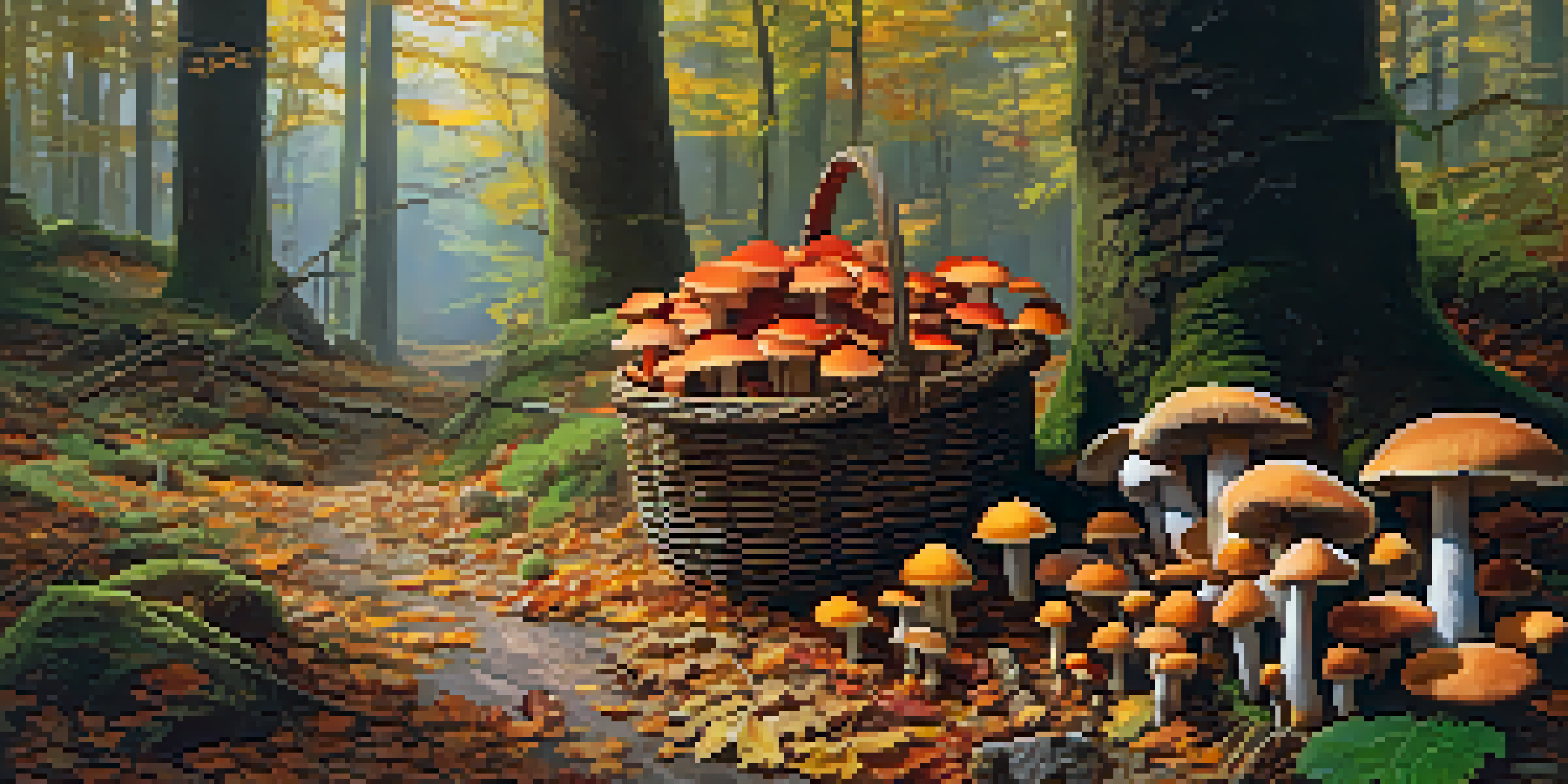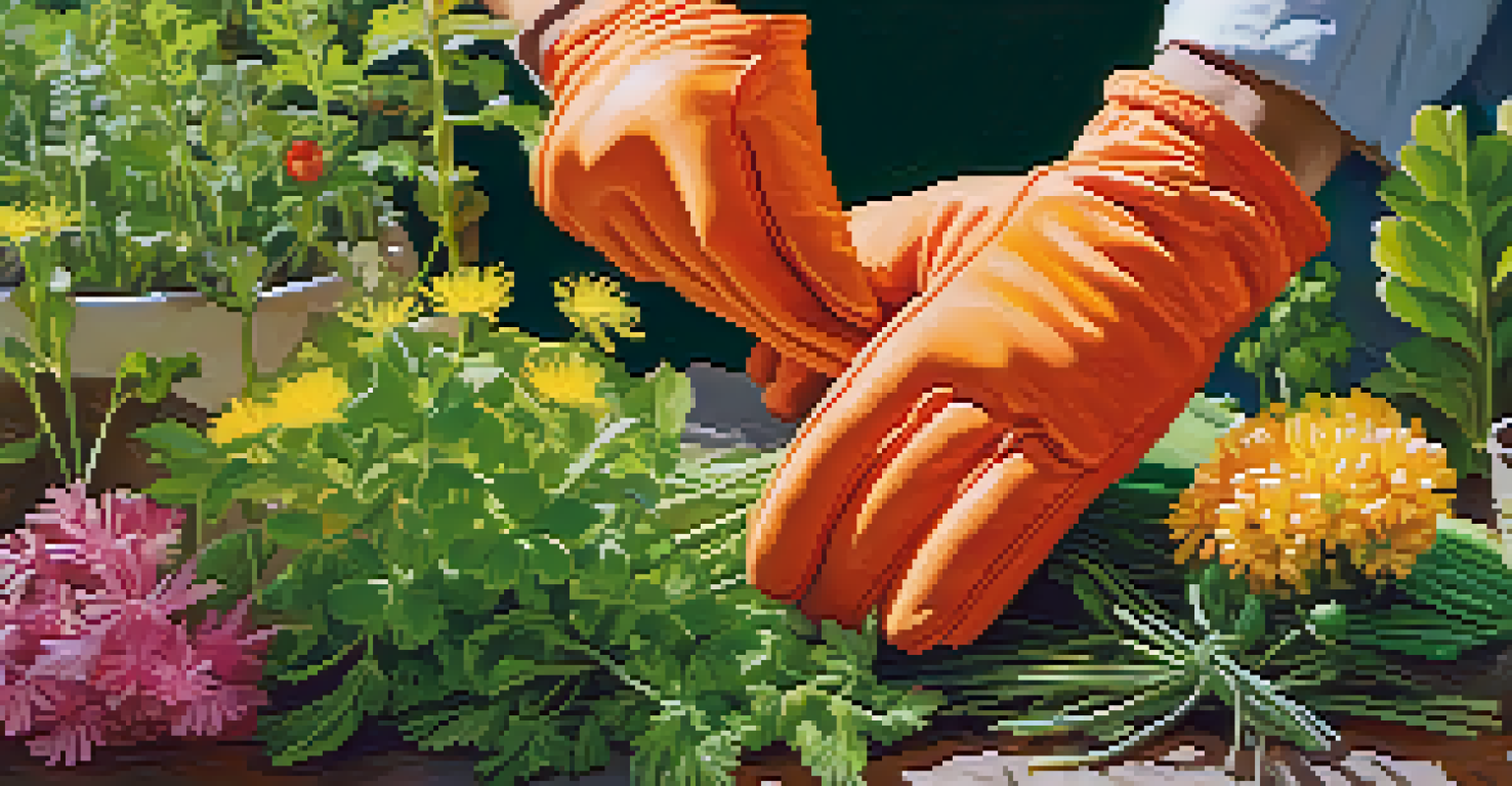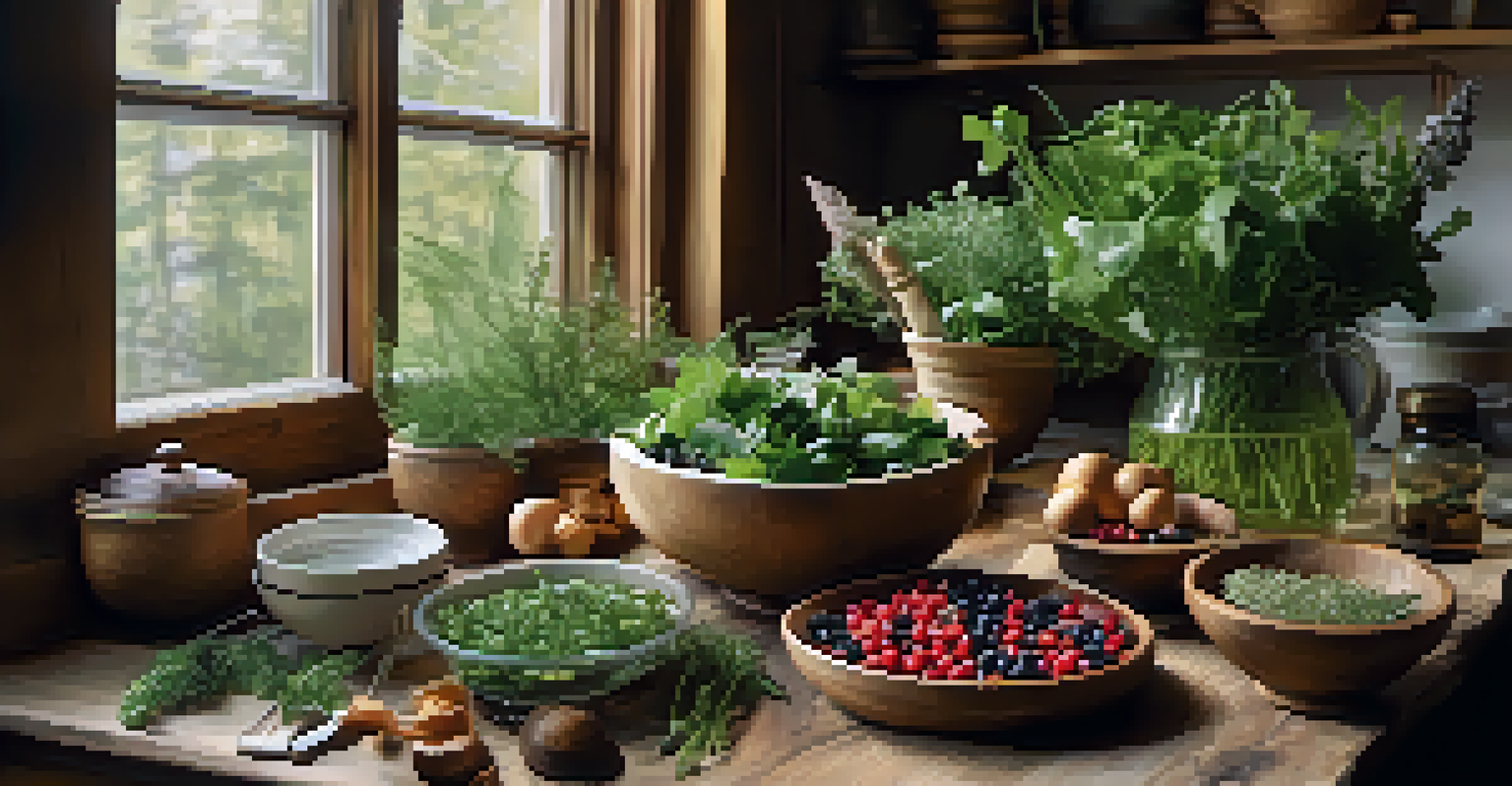Foraging for Beginners: Tips for a Successful Harvest

Understanding the Basics of Foraging
Foraging is the practice of searching for and gathering wild food resources. It can be a delightful way to connect with nature while enhancing your culinary experiences. Think of it as a treasure hunt, but instead of gold, you're searching for edible plants, mushrooms, and berries.
Foraging is not about the food; it's about the experience of being in nature and connecting with the world around you.
Before you head out, it’s important to familiarize yourself with local flora. Knowing what’s safe to eat and what’s not can make all the difference between a delightful meal and a trip to the hospital. Consider investing in a foraging guidebook or downloading a reliable app to help you identify the plants you encounter.
Additionally, understanding the seasonal availability of various plants is key. Just like fruits and vegetables from the grocery store, wild edibles have their own growing seasons. This knowledge will not only keep you safe but will also enhance your foraging success.
Essential Gear for a Foraging Adventure
As with any outdoor activity, having the right gear can make your foraging experience smoother and more enjoyable. A good pair of gloves, a basket or tote for collecting your finds, and a sturdy knife can be incredibly useful. Think of your gear as your toolkit; each item serves a specific purpose.

A field guide can also be essential, helping you identify plants and ensure they are safe for consumption. Nowadays, many apps can assist with identification, adding an interactive element to your foraging. Just make sure your phone is charged, as you’ll want to have easy access to this information.
Safety is Crucial in Foraging
Identifying edible plants accurately is essential to avoid toxic look-alikes that can pose serious health risks.
Lastly, don’t forget to dress appropriately for the weather and terrain. Comfortable shoes and weather-appropriate clothing will allow you to focus on your hunt rather than being distracted by discomfort.
Choosing the Right Location for Foraging
Location is everything when it comes to foraging. Parks, forests, and even your backyard can be treasure troves of edible plants. However, make sure to choose areas that are free from pesticides or pollution, as these harmful chemicals can contaminate your finds.
The best way to find yourself is to lose yourself in the service of others.
Local farmers’ markets or community gardens can also provide great spots for foraging, as they often have a variety of herbs and vegetables. Plus, you might meet fellow foragers who can share valuable insights and tips. Think of it as networking for nature lovers!
Always remember to respect private property and obtain permission if you want to forage in someone’s garden. Foraging should be a sustainable practice, so avoid overharvesting and consider the impact on local ecosystems.
Safety First: Identifying Edible vs. Toxic Plants
One of the most crucial aspects of foraging is safety, especially when it comes to identifying edible versus toxic plants. Some edible plants have poisonous look-alikes, so a keen eye and thorough knowledge are essential. For example, wild carrots resemble the toxic hemlock, so always double-check your finds.
A good rule of thumb is to only forage plants you can confidently identify. If you’re unsure about a particular plant, it’s best to leave it be. You wouldn’t want to take any unnecessary risks when it comes to what you consume!
Sustainable Foraging Practices
Taking only a small portion of what you find ensures the health of local ecosystems and allows future foragers to enjoy the same resources.
Consider joining a local foraging group or taking a class to learn from experienced foragers. Being part of a community can enhance your skills and boost your confidence in identifying safe and delicious wild edibles.
Best Practices for Sustainable Foraging
Sustainability is key in foraging, ensuring that you leave enough plants for wildlife and future foragers. A good practice is to only take a small portion of what you find, allowing the plant to continue thriving. Think of it as borrowing from nature rather than taking without giving back.
Additionally, be mindful of the environment around you. Avoid trampling on delicate ecosystems or disturbing wildlife. The goal is to enjoy the bounty of nature while preserving it for future generations.
By practicing sustainable foraging, you contribute to the health of your local ecosystem. This not only benefits you but also the plants and animals that call that area home.
Cooking and Preparing Your Foraged Finds
Once you've gathered your foraged goodies, it’s time to bring them into the kitchen! There are countless ways to prepare wild edibles, from salads and soups to jams and jellies. Think of your foraged ingredients as a way to elevate your everyday meals.
Start simple by adding fresh herbs to your dishes or incorporating wild greens into salads. Foraged mushrooms can be sautéed as a side dish or blended into sauces. The possibilities are endless, and experimenting can lead to delightful discoveries.
Join Foraging Communities
Connecting with fellow foragers through online forums and local workshops enhances your knowledge and skills in identifying and preparing wild edibles.
Don’t forget to thoroughly clean your finds before cooking. Rinse herbs and greens to remove dirt and insects, and ensure mushrooms are properly prepared. Enjoy your culinary creations, and share them with friends and family to spread the joy of foraging!
Resources and Communities for Foragers
The world of foraging is rich with resources and communities eager to share knowledge. Online forums, social media groups, and local clubs can be excellent places to learn, share experiences, and find support. Connecting with fellow foragers can enhance your journey and deepen your understanding of wild edibles.
Consider following foraging blogs or YouTube channels that offer tips, recipes, and identification guides. This can be a fun way to immerse yourself in the foraging culture and stay updated on seasonal finds. Think of it as a way to continuously learn and grow in your foraging skills.

Local workshops and classes can also provide hands-on experience, allowing you to practice your skills with guidance from experts. The more you engage with the community, the richer your foraging experience will be.